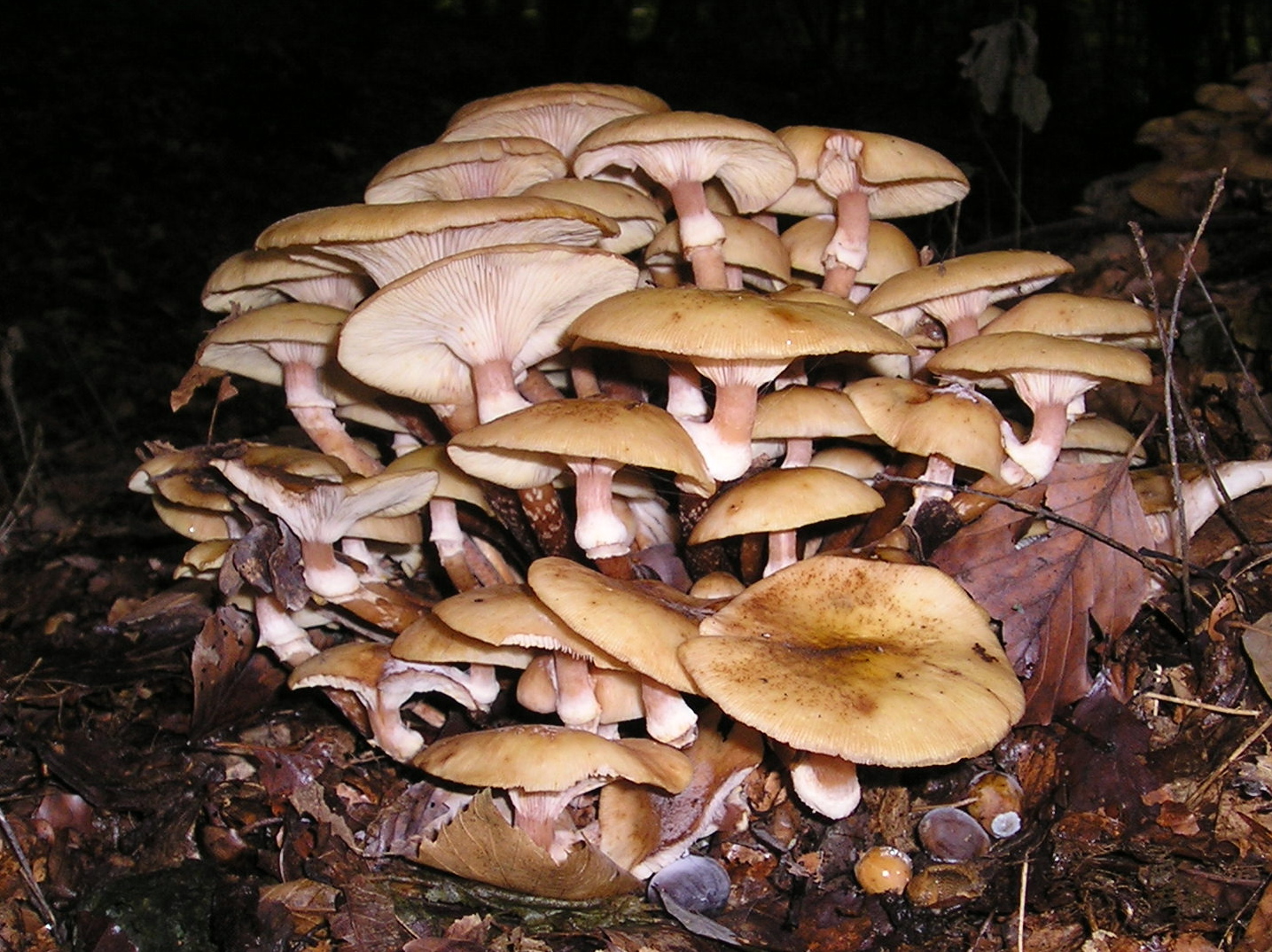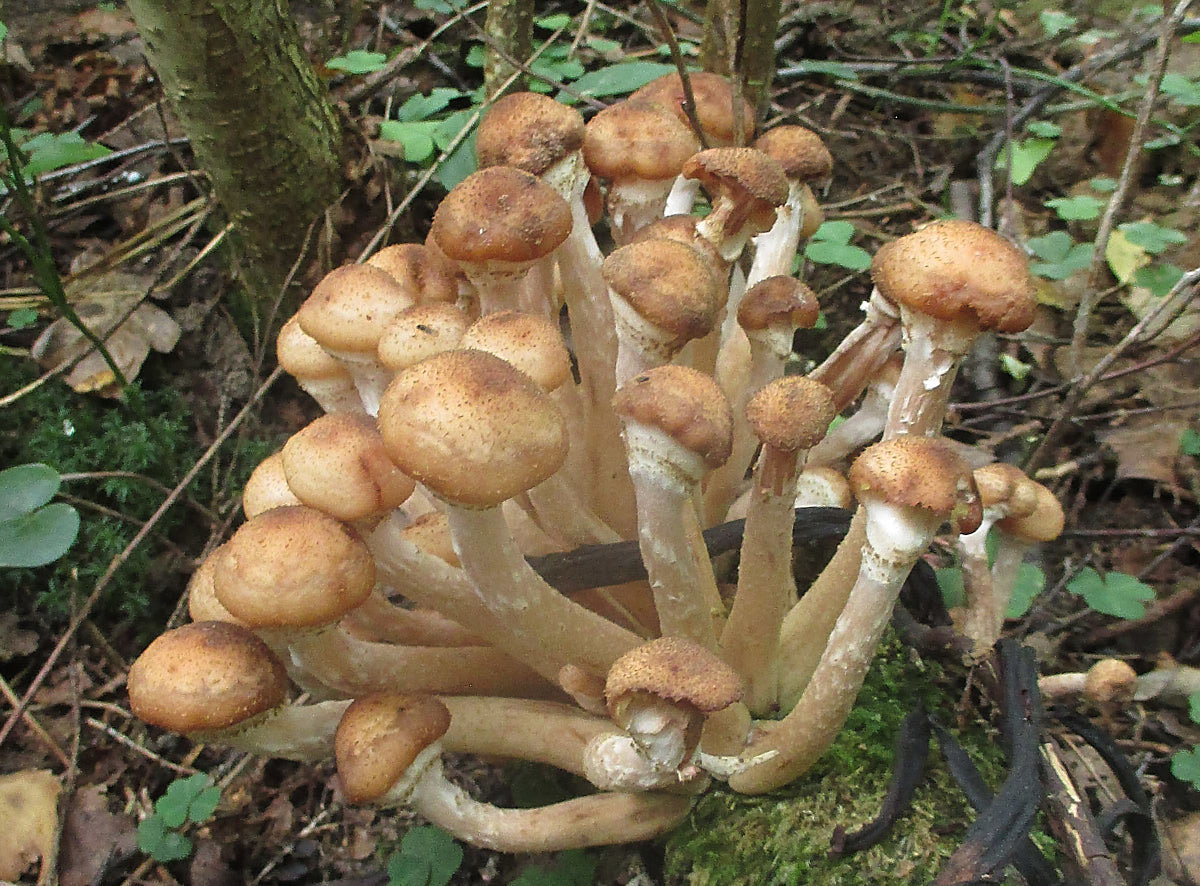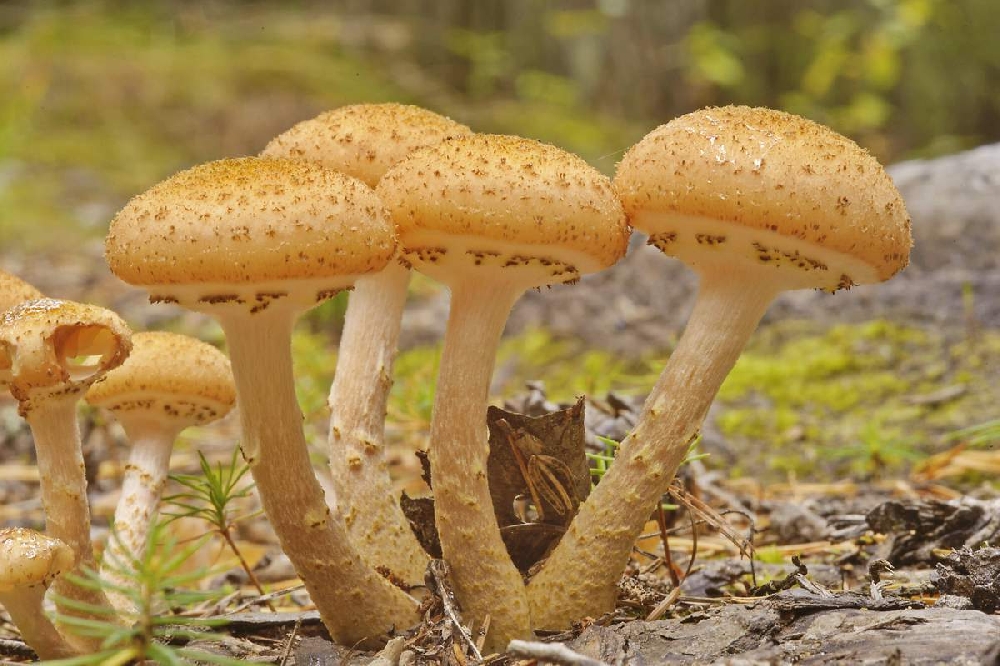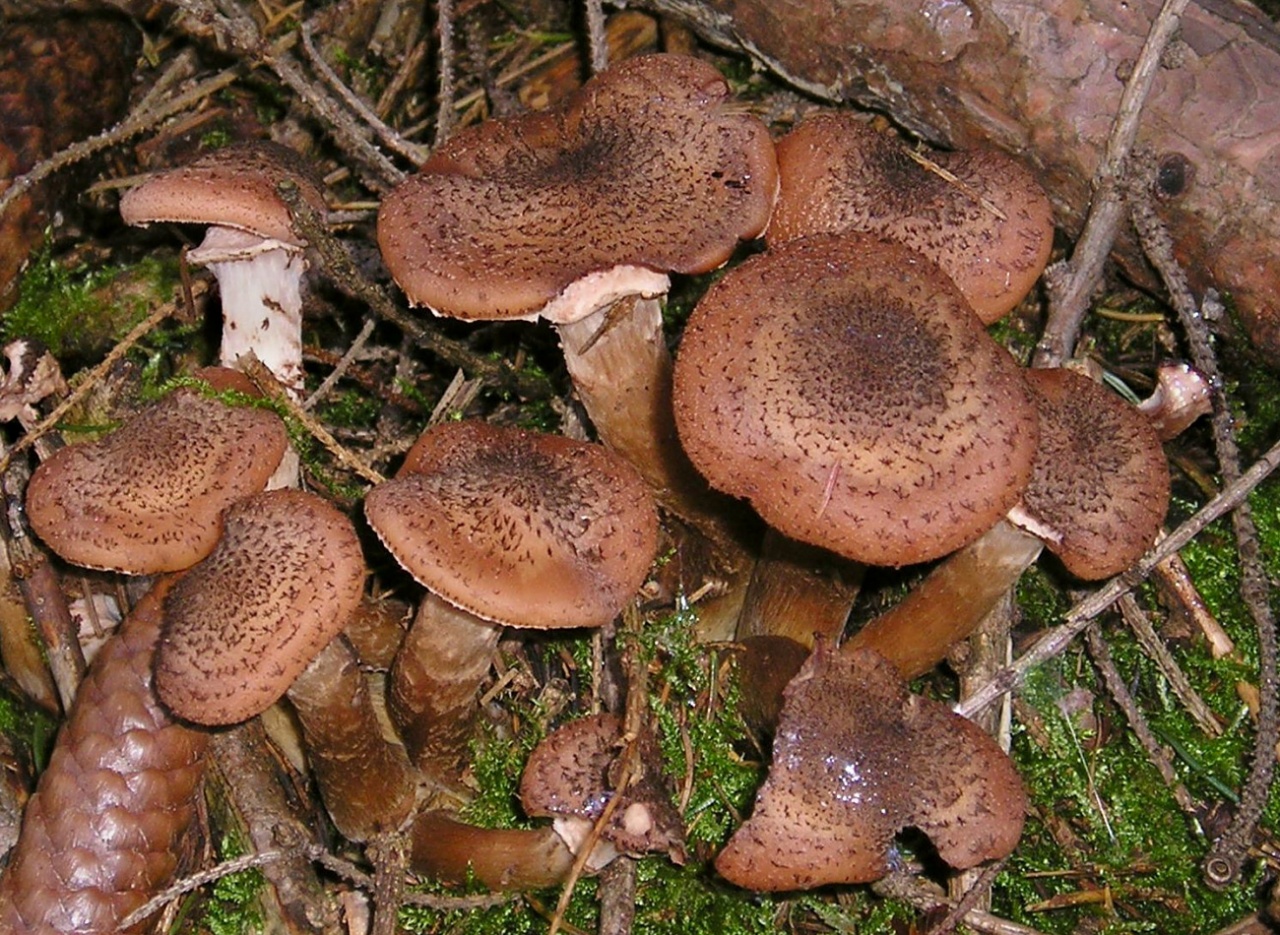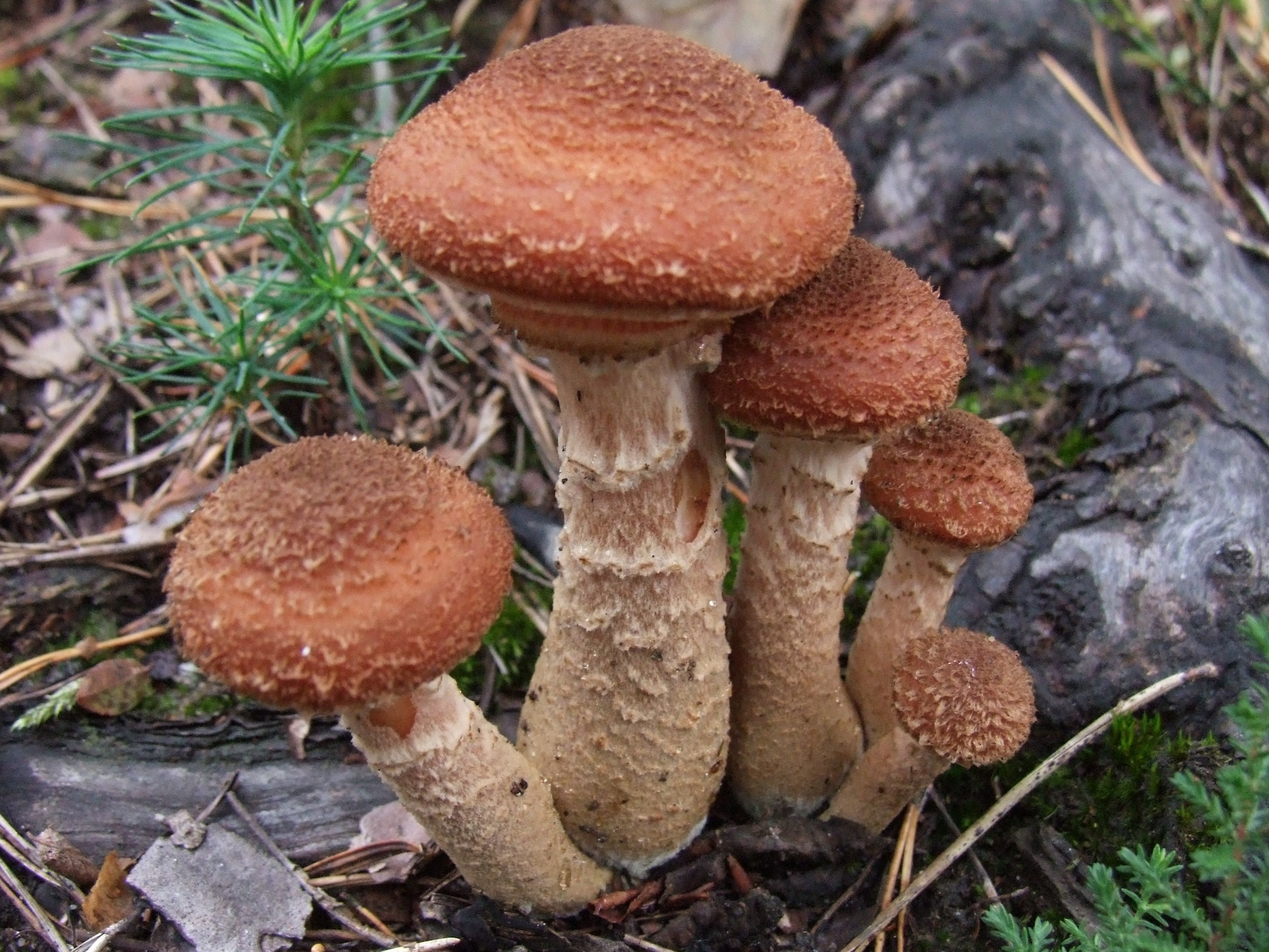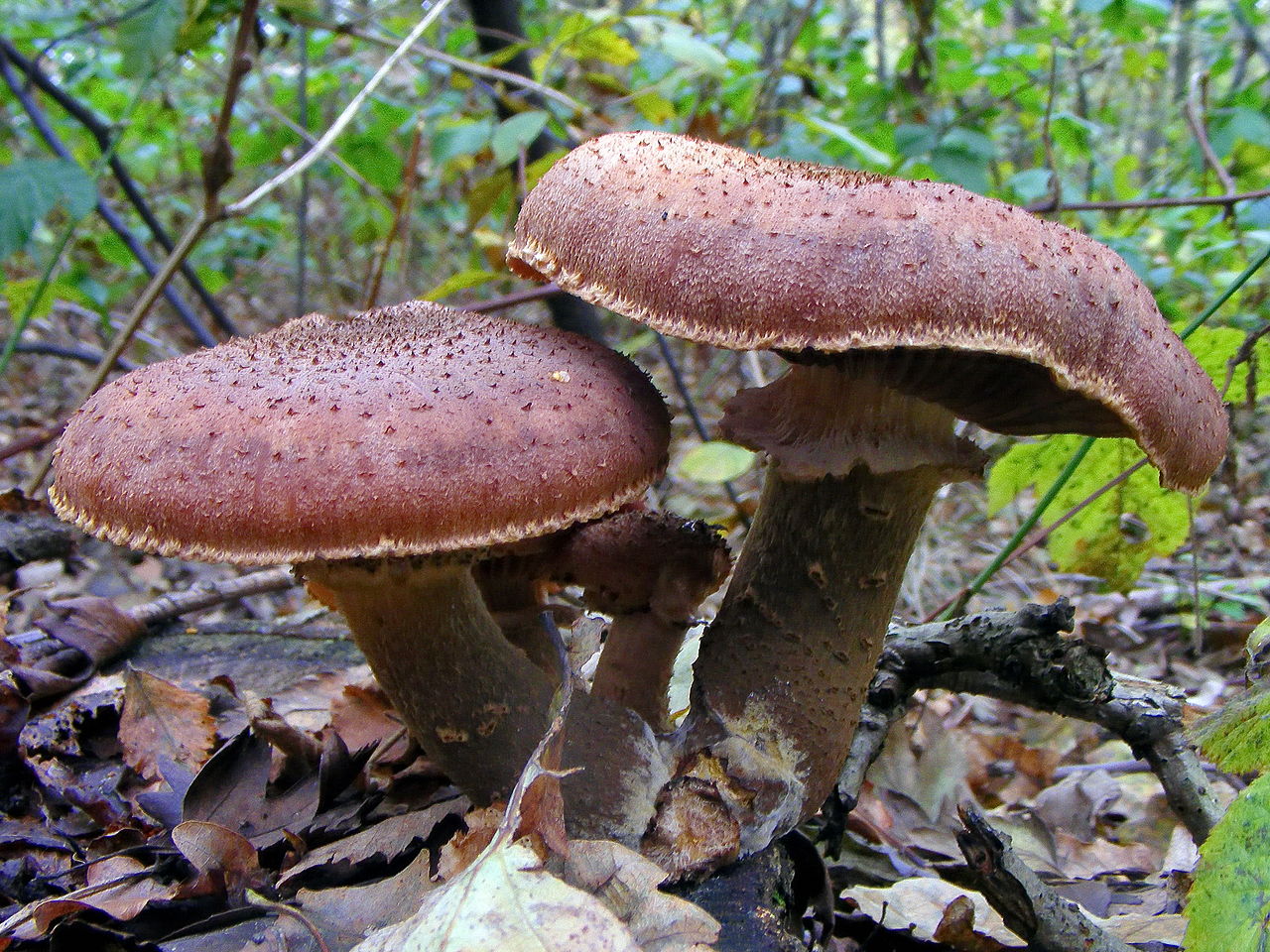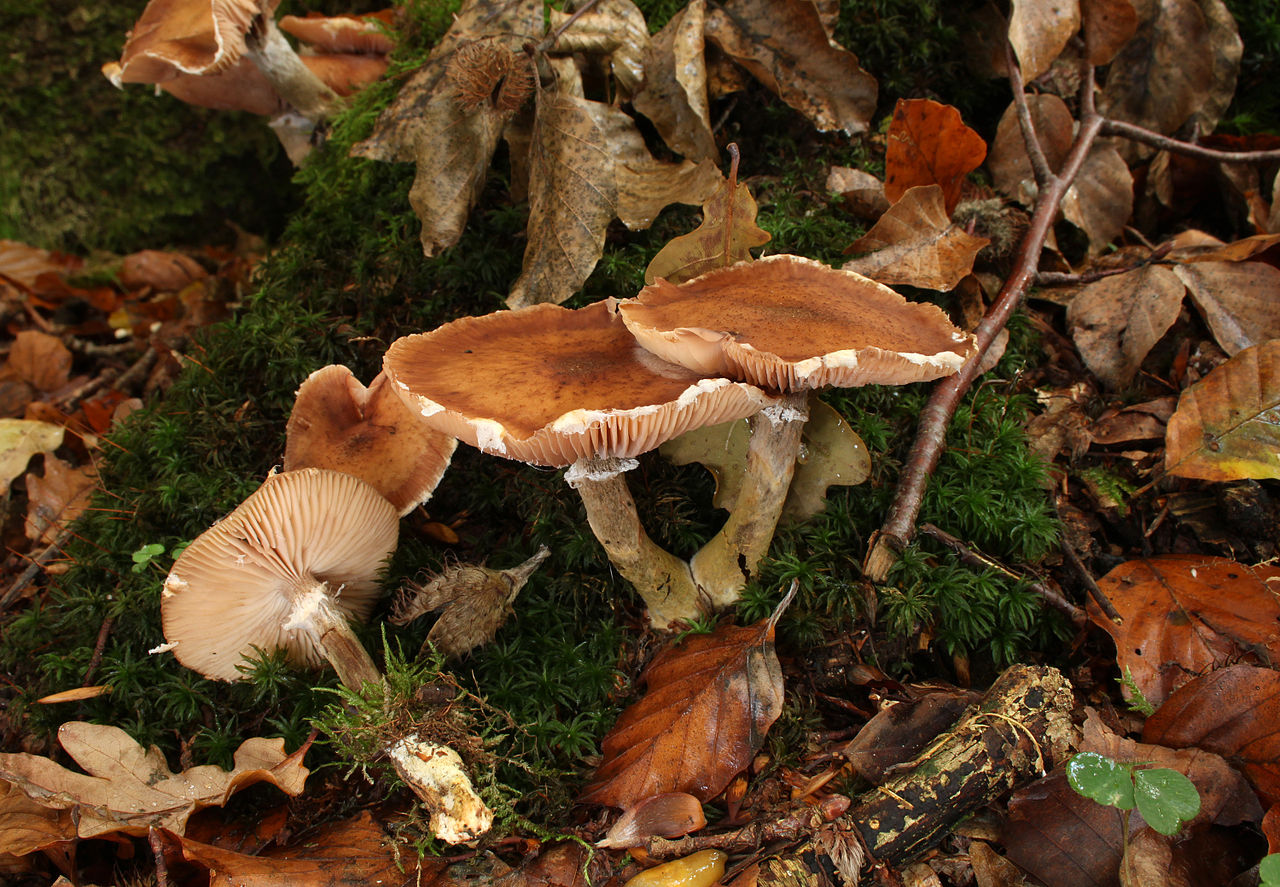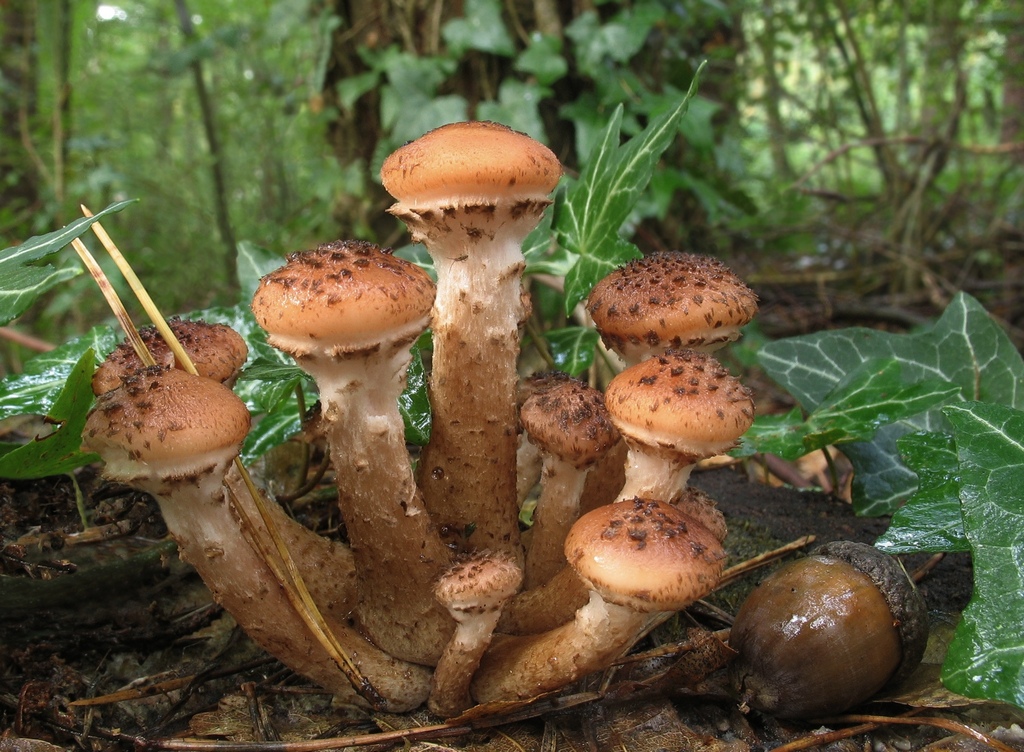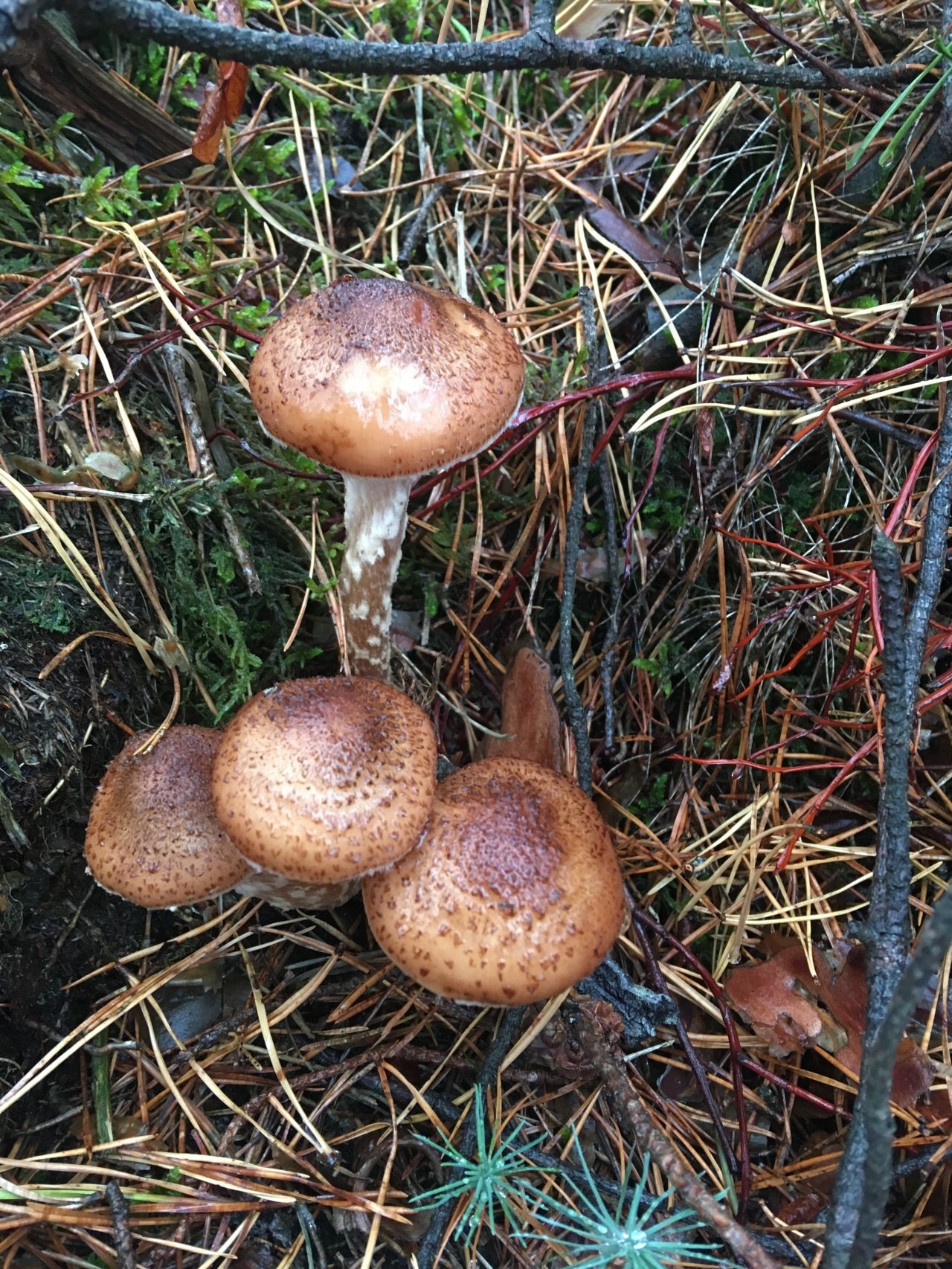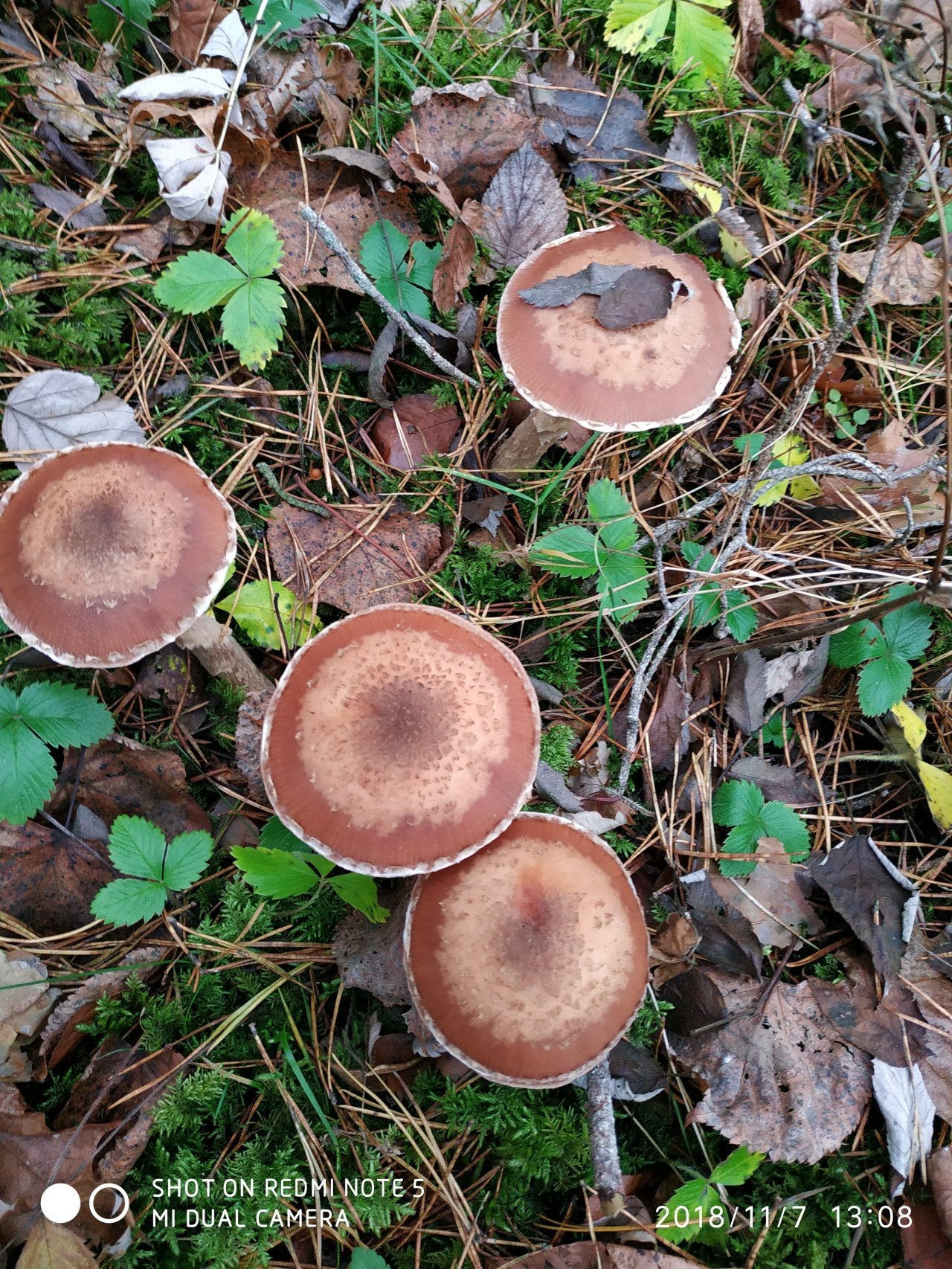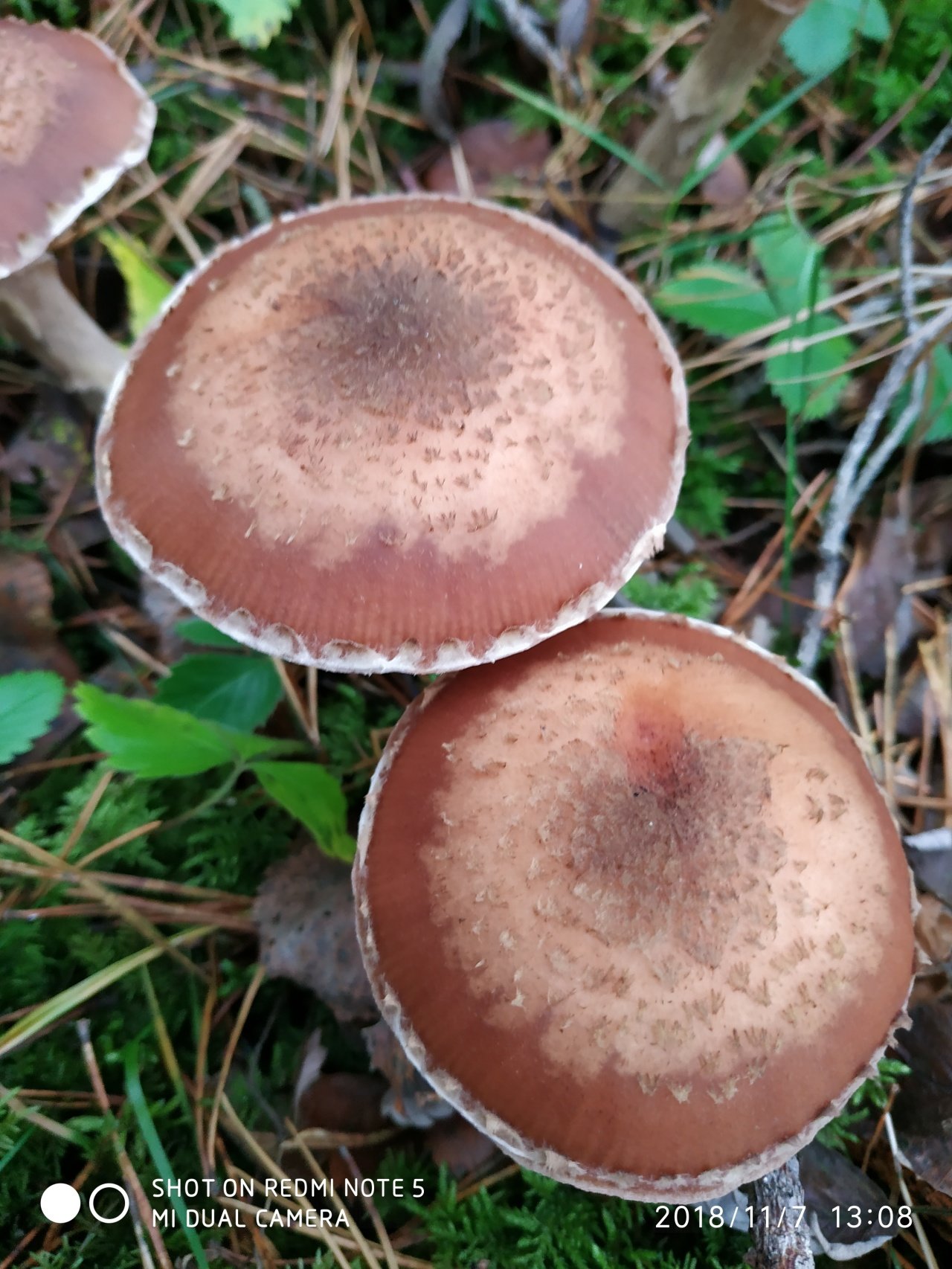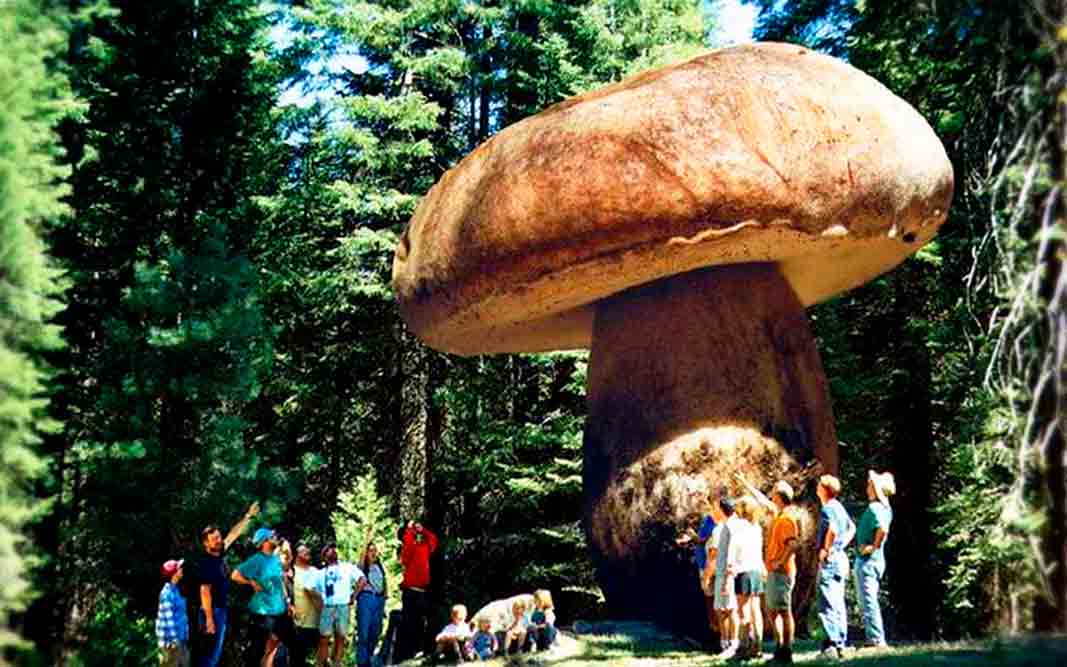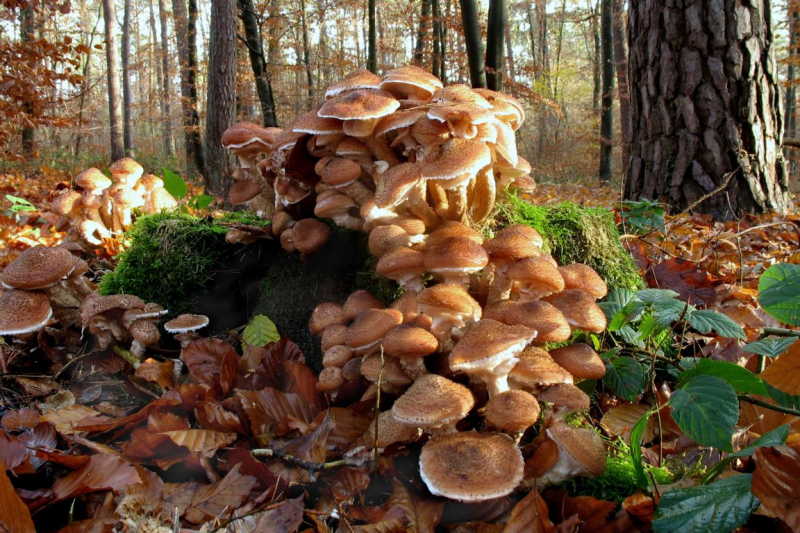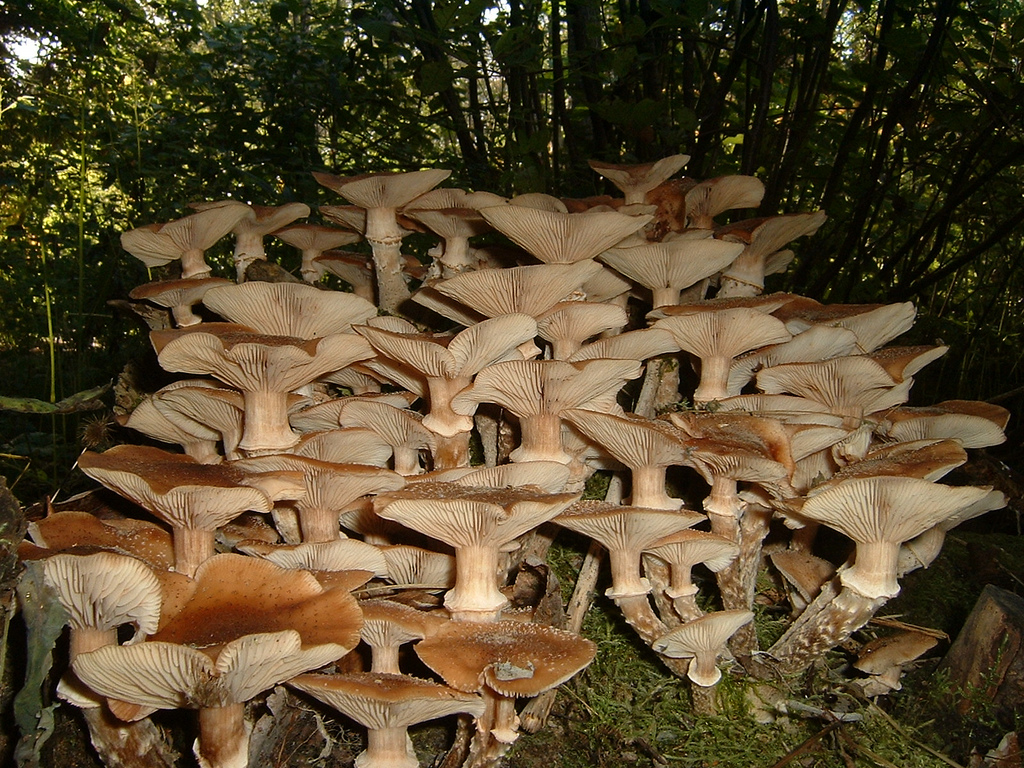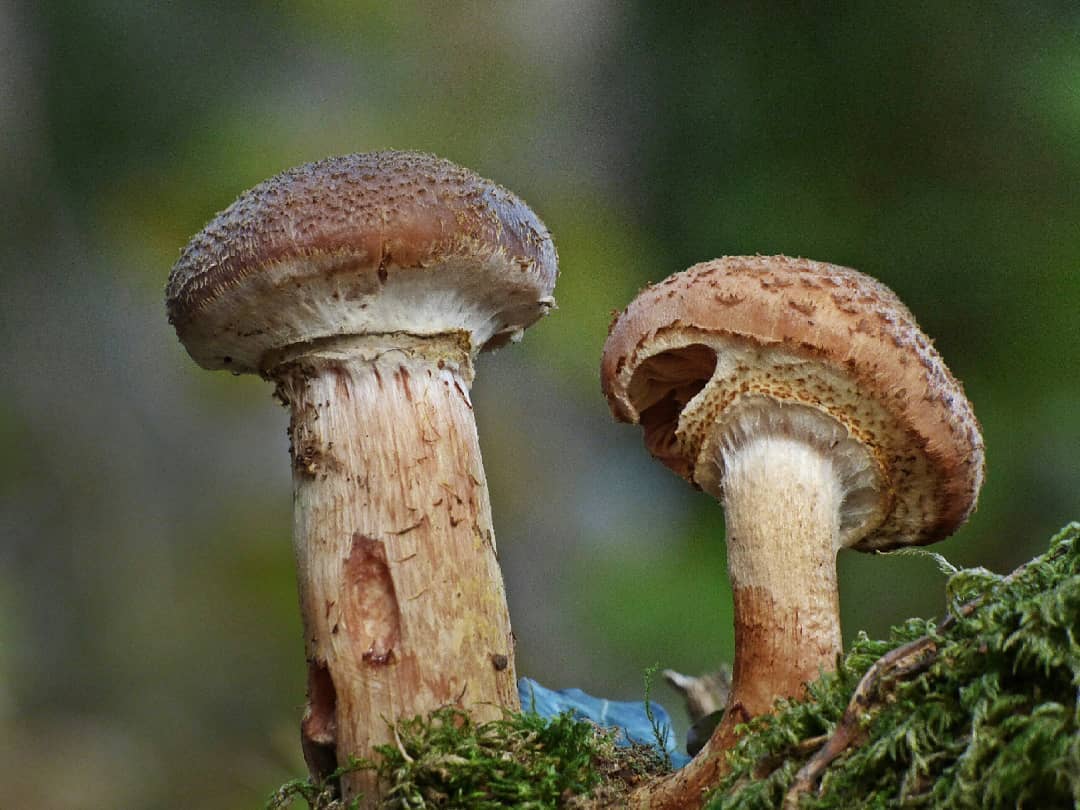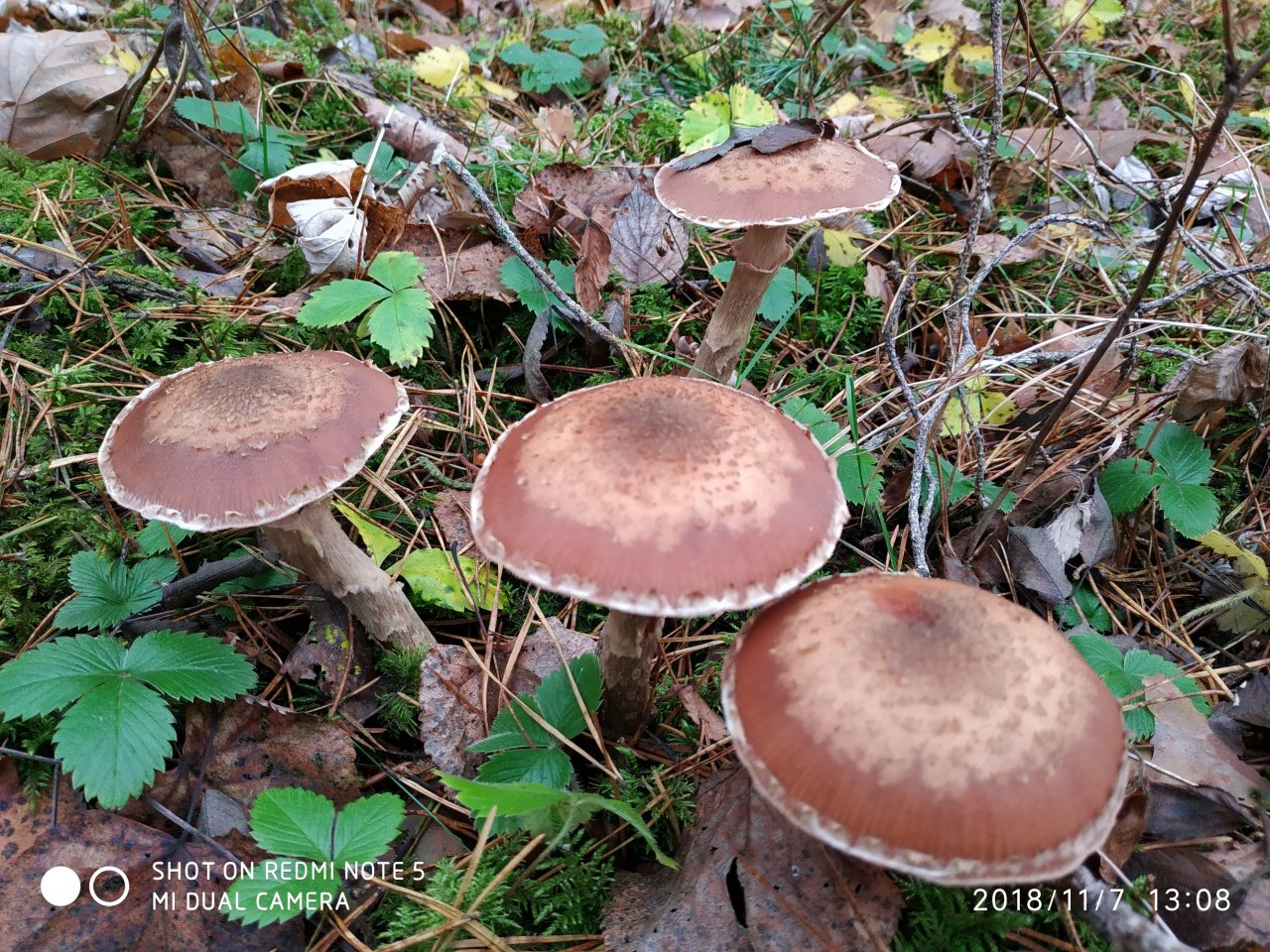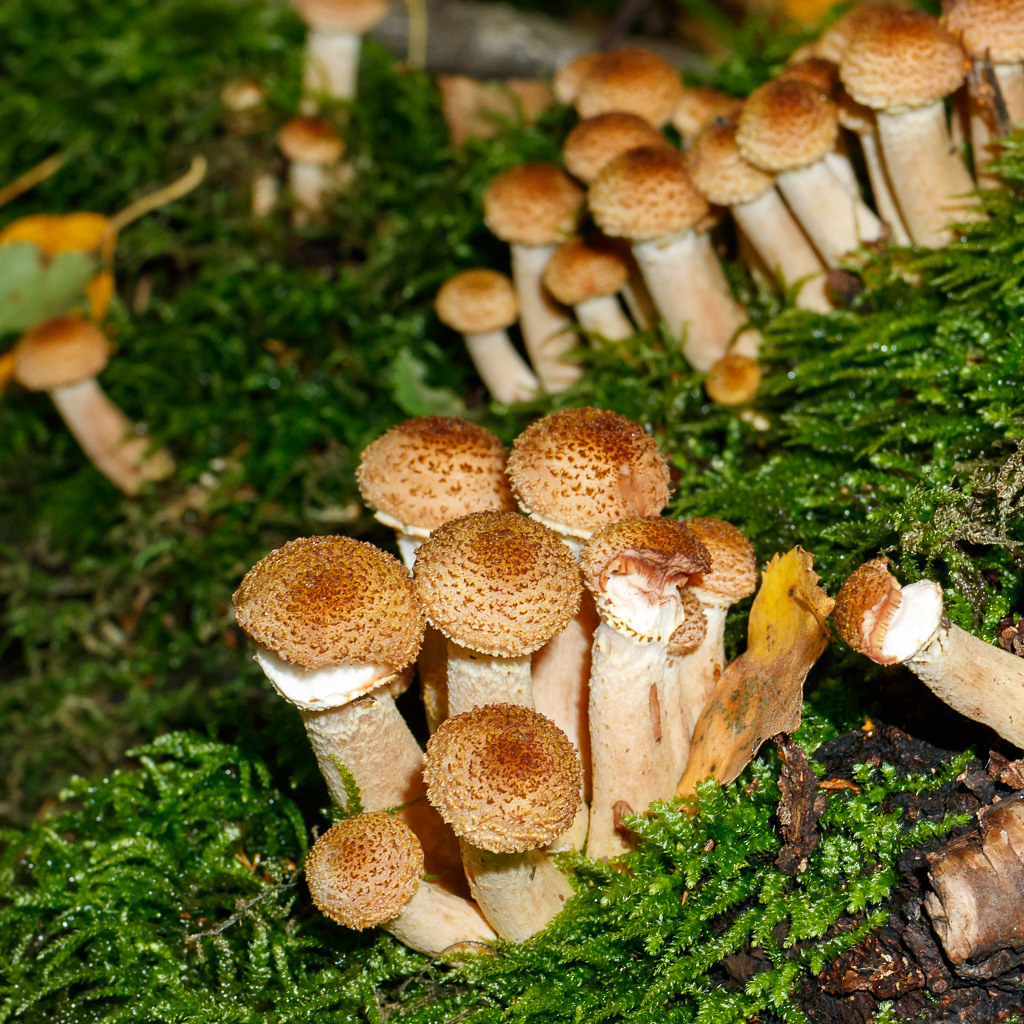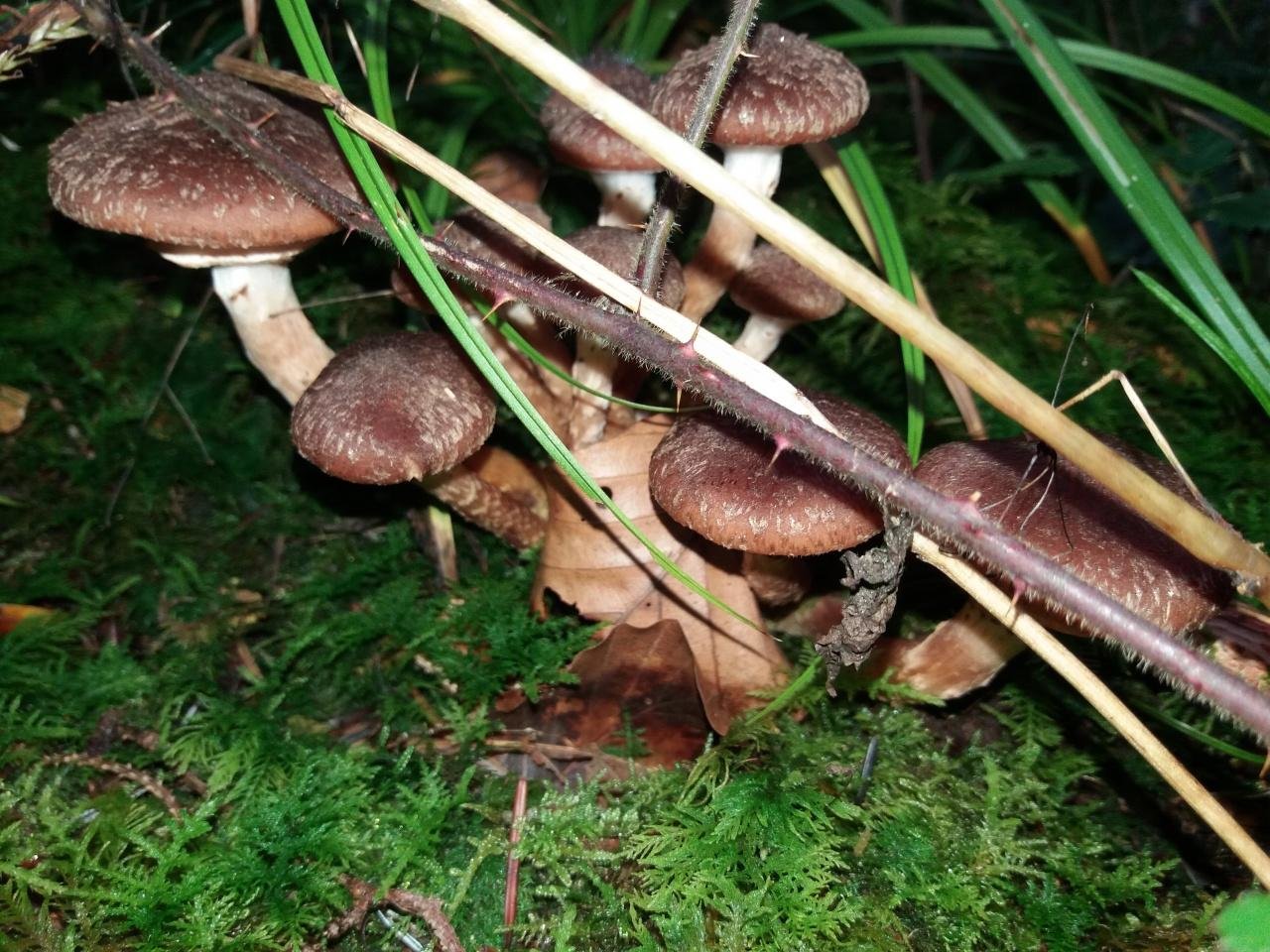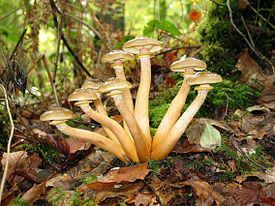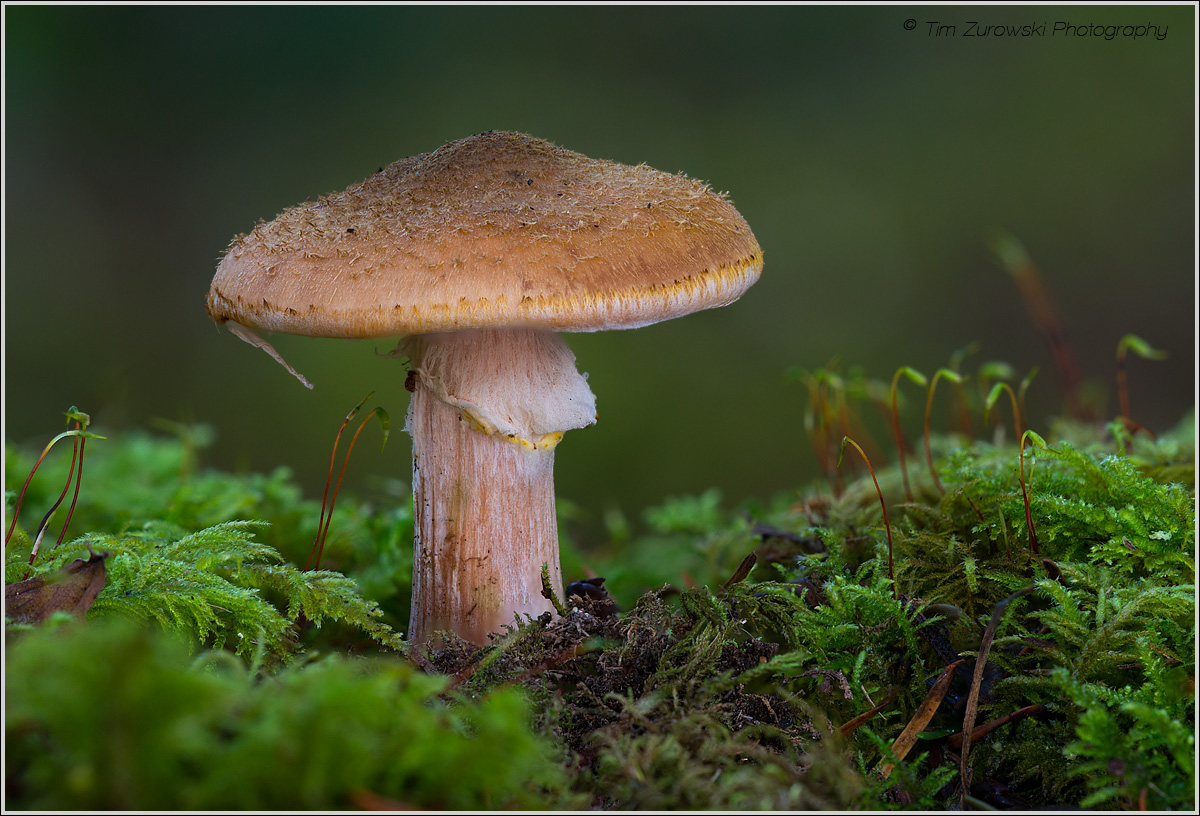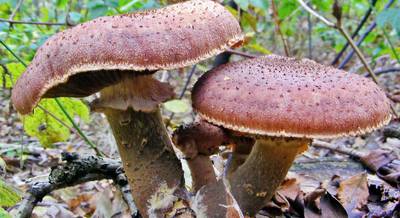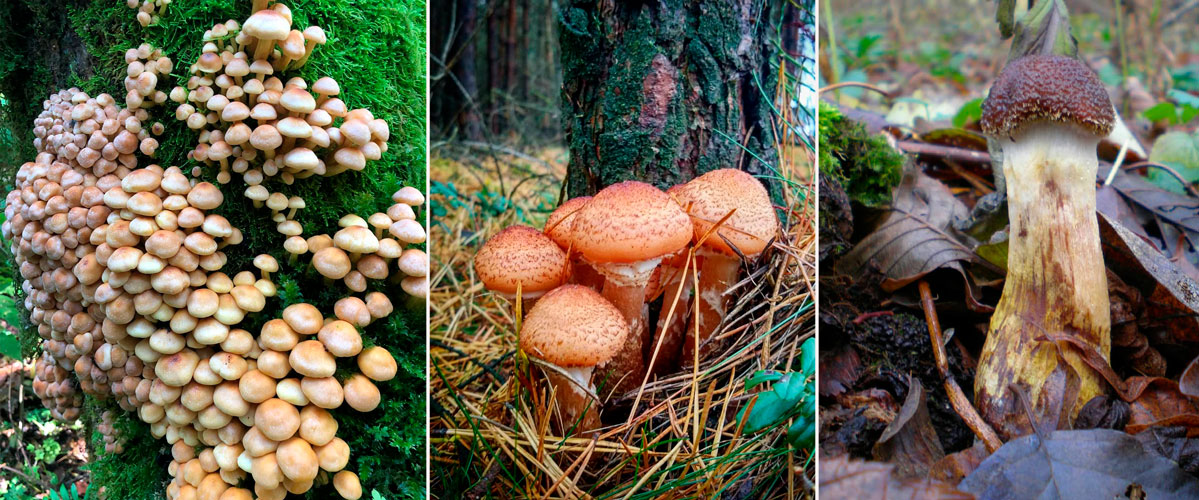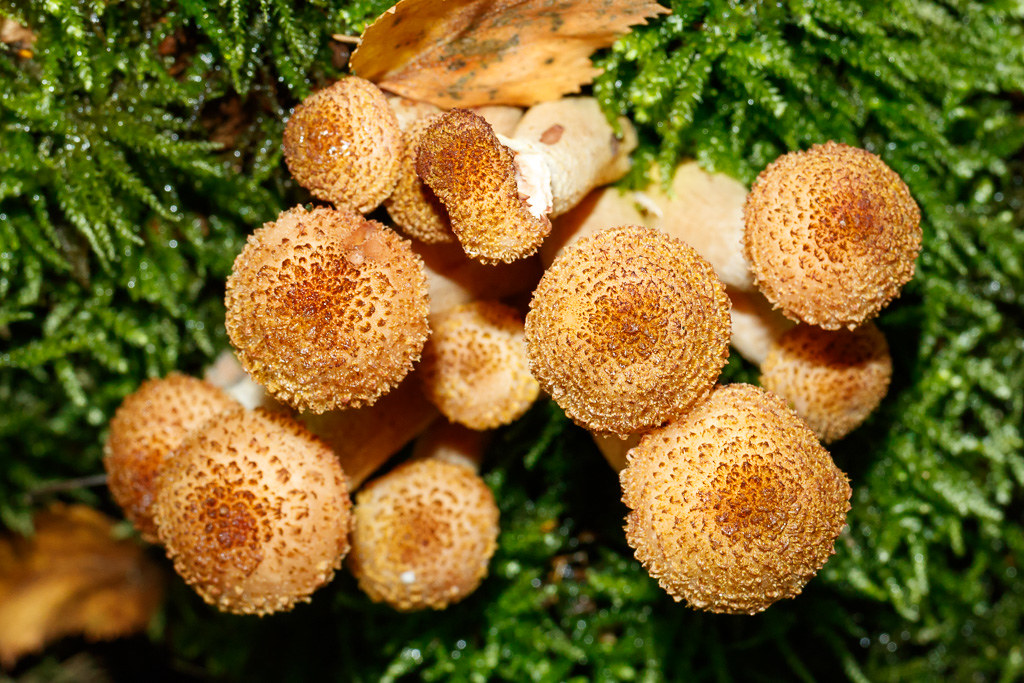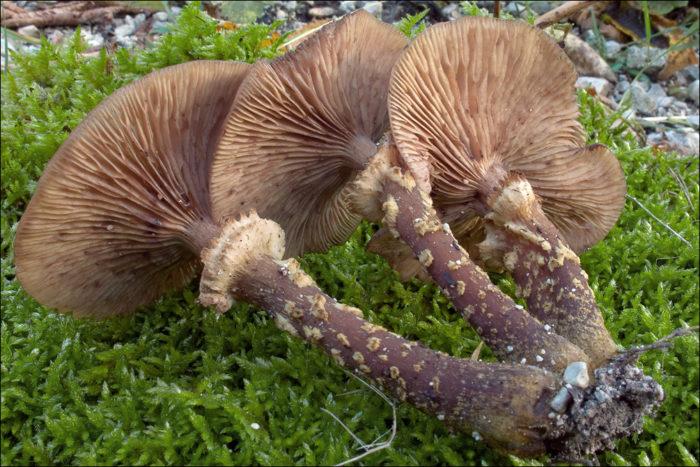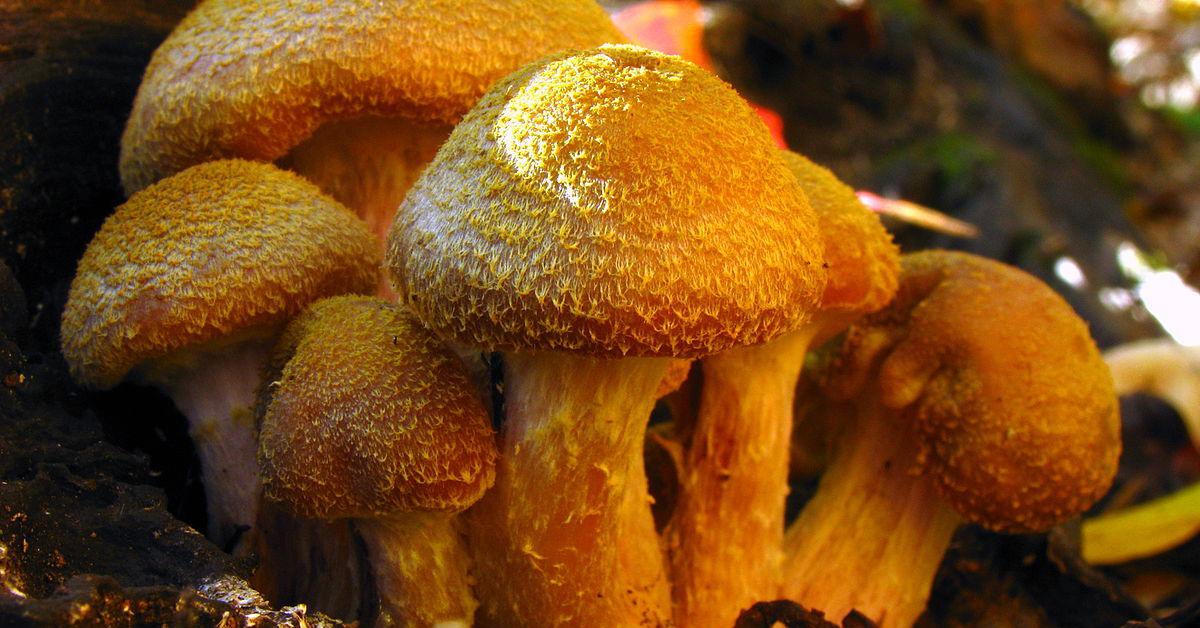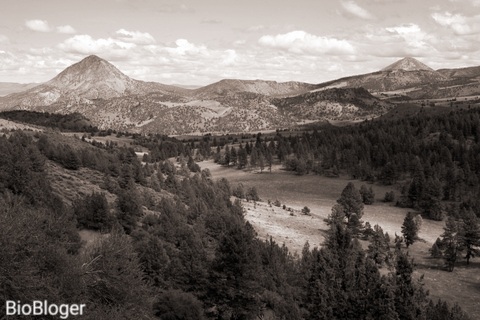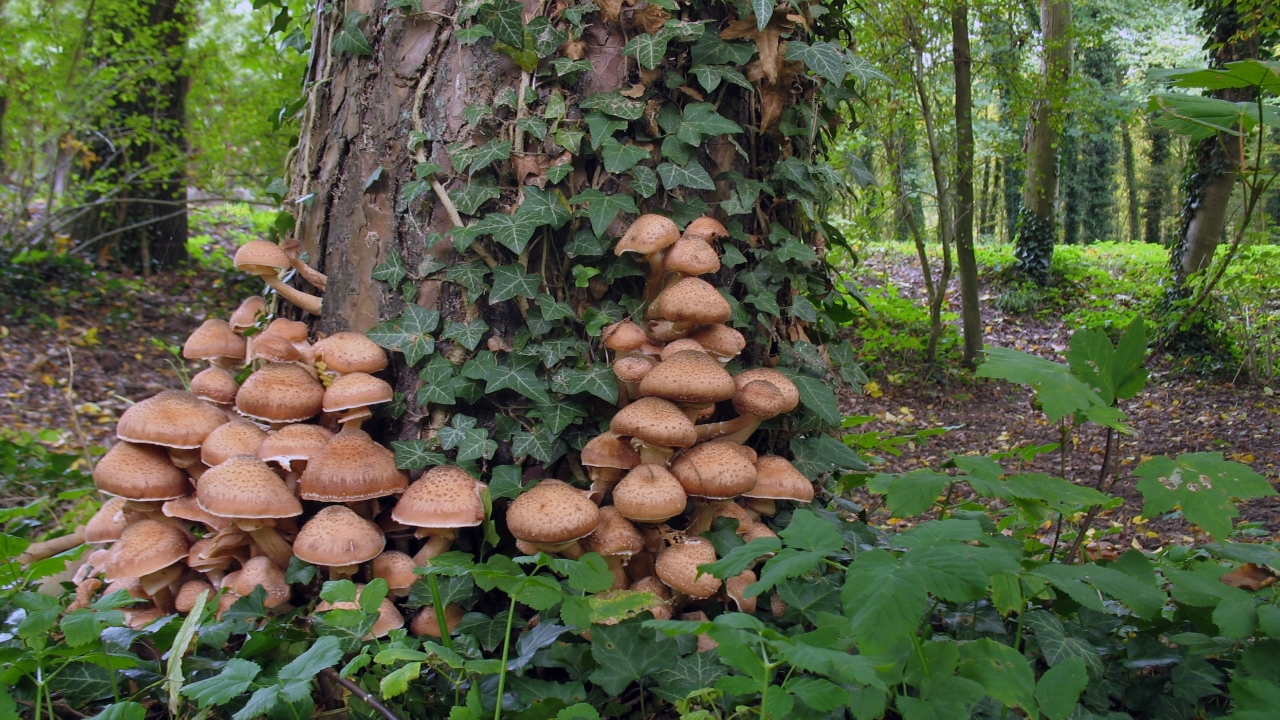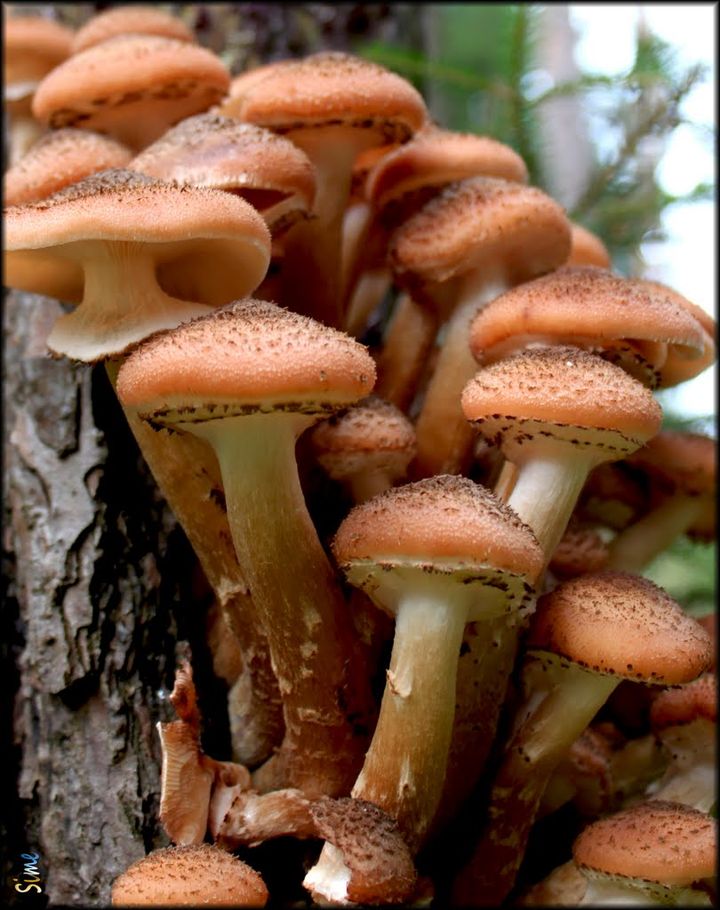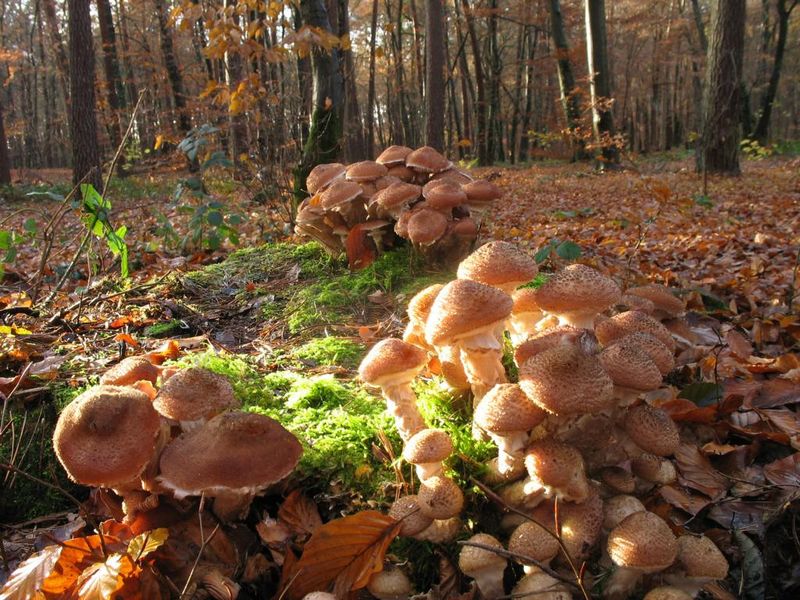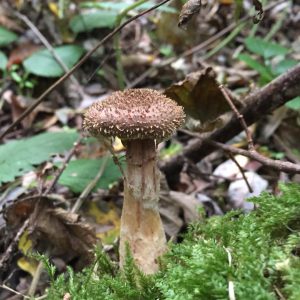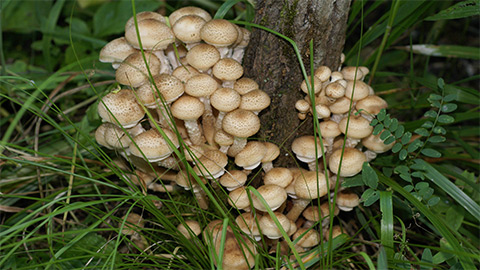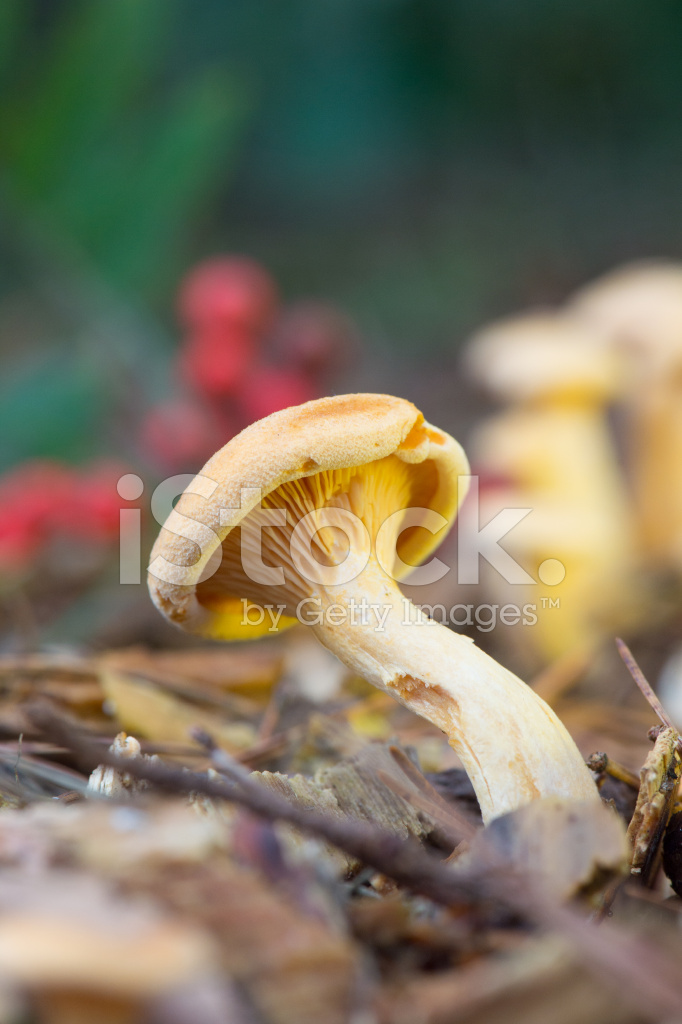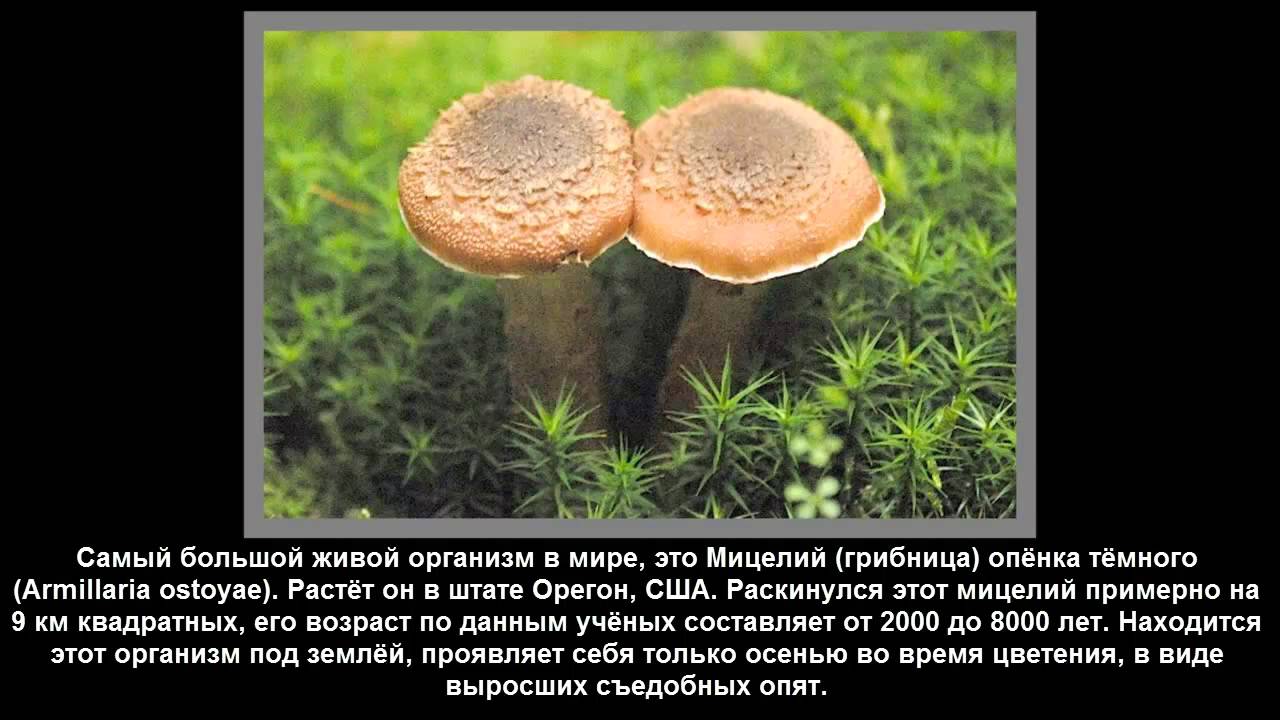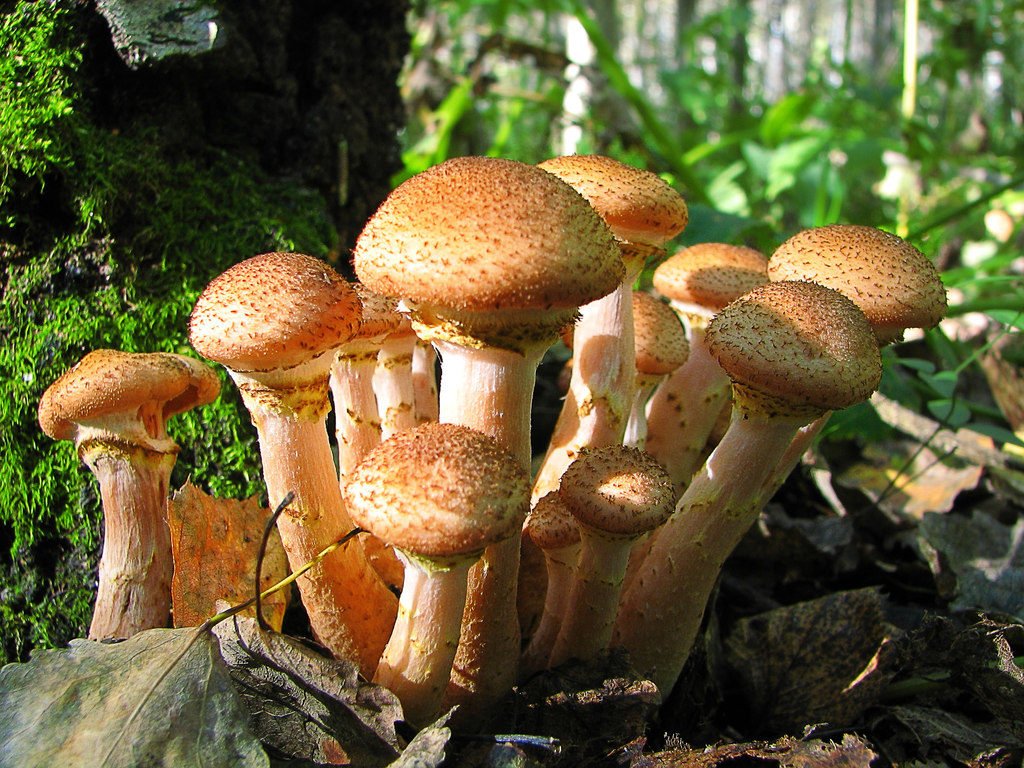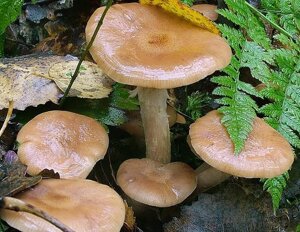Poplar honey fungus Cyclocybe Aegerita

Poplar honey fungus Cyclocybe Aegerita
An edible mushroom of the Cyclocybe genus, Stropharia family, has been a cultivated species for a long time, and is still actively cultivated in Italy, where it is called "Piopino". Also, this mushroom is known under the names Agrocybe Poplar and Foliota Topolova.
Appearance
The hat, in young specimens, is soft brown, has a velvety surface and a spherical shape. With age, the cap flattens, brightens and becomes covered with cracks.
The hymenophore is lamellar, the plates, in youth, light yellow, with age become brownish. The spore powder is brown.
The leg is up to 15 cm long and up to 2 cm thick. A lighter shade than the cap, usually curved and connected from below with other fruiting bodies. In the upper part, there is a filmy ring on the leg.
The pulp is rich, fleshy, from white to light brown, with a mealy taste and tart aroma.
Where and when it grows
Cyclocybe Aegerita is grown artificially on hardwood. Primarily on poplars and willows, but also on elms, birch, elder or fruit trees. For the trees themselves, the growing of Poplar Openk on them is a sure sentence, the mycelium completely destroys the wood in 5 - 7 years. This mushroom is unpretentious, and anyone can now grow it with their own hands.
Culinary application
Cyclocybe Aegerita is edible, has a wonderful taste, a special “crispy” inner structure, and is highly prized in European countries. Suitable for any kind of culinary processing and preparation for future use.
Poplar honey mushroom is rich in the amino acid methionine, which is useful for the body, which is necessary to maintain proper metabolism. Funds based on this fungus are used to treat chronic headaches and hypertension, and the antibiotic agrocybin is used as an antibacterial agent. Lectin obtained from poplar honey agaric is used as an antitumor agent to combat the formation of cancer cells.
Evaluation of taste, medicinal properties, benefits and possible harm
Mushrooms are often called vegetable meat, while their calorie content is minimal. Dark mushrooms contain a large amount of glycogen, vitamins, trace elements, as well as organic acids, sugar and ash. The phosphorus content in them is higher than in cow's milk, and the potassium content is the same as in pears. Half of the dry mass is fiber.
The flesh of spruce honey agaric is tough enough, which means it will be difficult to digest. It should not be eaten by the elderly or those suffering from diseases of the gastrointestinal tract.
Important! It is forbidden to eat mushrooms for children under three years old, pregnant and lactating women. Dark mushrooms are used to treat tumors, antibacterial therapy, diseases caused by E. coli or Staphylococcus aureus
They are able to normalize the functioning of the thyroid gland. In addition, they help to remove cholesterol and prevent it from lingering in the vessels, and the low glycemic index allows them to be used by patients with diabetes mellitus.
Dark mushrooms are used to treat tumors, antibacterial therapy, diseases caused by E. coli or Staphylococcus aureus. They are able to normalize the functioning of the thyroid gland. In addition, they help to remove cholesterol and prevent it from lingering in the vessels, and the low glycemic index allows patients with diabetes mellitus to use them.
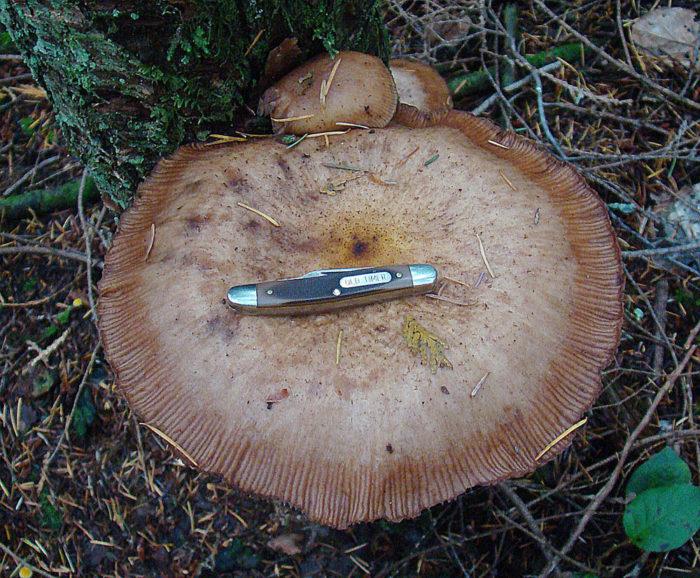
False doubles
Honey mushrooms belong to the autumn variety, for a long time they were even considered one organism, until scientists revealed some differences.
| Name | Hat and hymenophore | Leg and ring | Smell and taste | Danger |
| Armillaria cylindrical | The scales on the cap are preserved even in adult species, the color is brownish | The ring is torn star-shaped | Cheesy smell | Edible |
Gray mushroom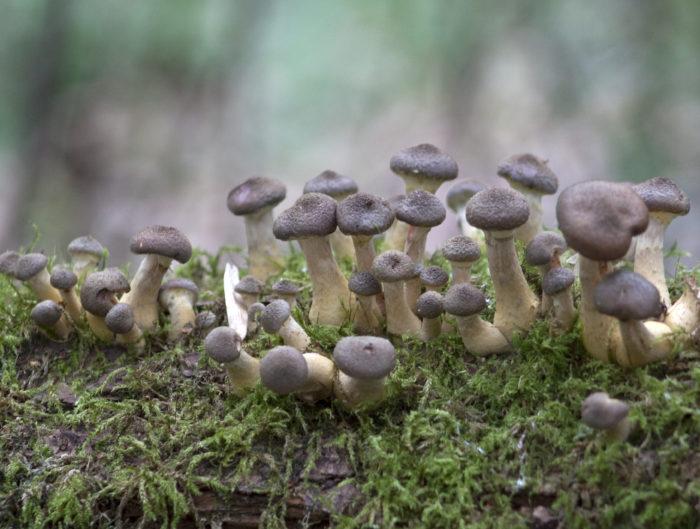 |
Scales quickly disappear from the cap (washed off), the color may be with a bluish tint | Ring break is wrong | Mushroom smell, very fragrant | edible |
Scaly fleecy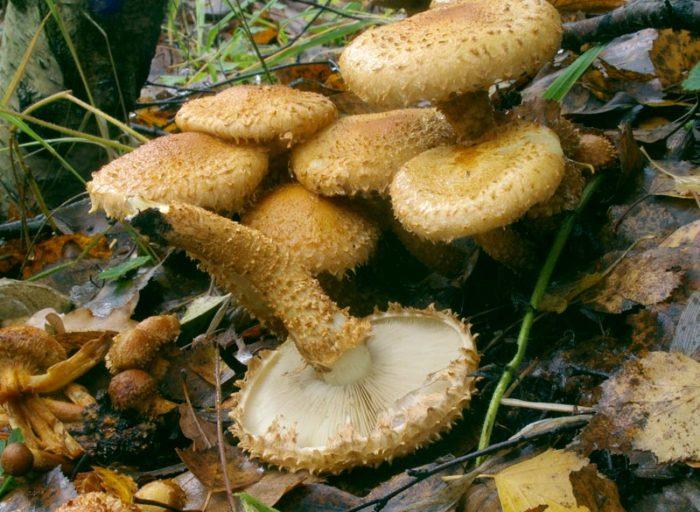 |
Increased number of scales on the cap, ocher spores | The ring is scaly, the leg is thin, long, narrowed downwards | The taste is bitter, the smell is pungent | Conditionally edible |
False Foam sulfur yellow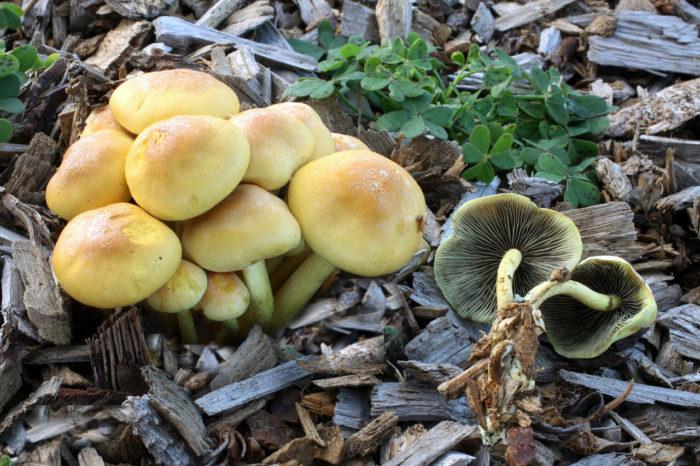 |
The hat is yellow with a brown tint, the plates are sulfur-yellow | Light yellow, hollow, very thin | Bitter, unpleasant smell | Poisonous |
It is not difficult to distinguish the thick-legged mushroom from the twins, especially from the poisonous ones. In any case, while on a quiet hunt, you need to be extremely careful and careful.
Candy
|
An early summer medium-yielding, partly self-fertile variety of domestic selection. The variety has good winter hardiness, scab resistance is above average. |
The tree is tall (5-7 m), fast-growing, with a powerful spreading wide dense dark green crown of a rounded shape, very viable, requires regular pruning. Flower buds can be damaged by frost. Begins to bear fruit in the 3-4th year, apples are harvested in early August. Delicate fruits adhere firmly to the branches, are not prone to falling off, but can be significantly damaged by wasps. Fruiting is regular, annual.
Fruits are round, even in size and shape, medium-sized (90-120 g), with a specific delicate caramel flavor. The color is bright yellow, densely “inscribed” with a red blush. The skin is thin, the pulp is creamy, juicy, tender, fine-grained. The taste is very sweet with a spicy honey flavor. Fruits are stored without a refrigerator for up to 1.5 months, somewhat losing aroma and taste in the process, and are poorly transportable.
Interesting Facts
The most incredible discovery is the discovery of a huge fungal organism in the state of Michigan. Until now, nothing larger has been found. This mycelium covers an area of 15 hectares. An analysis of the fruit bodies found along the entire perimeter of the mushroom area was carried out, and it was revealed that they all originate from one living organism. Now American textbooks study this phenomenon along with the blue whale and the giant sequoia.
Fatfoot honey fungus is found in various climatic zones and quite often falls into the baskets of mushroom pickers. It has a high taste, and many different dishes are prepared from it. In addition, the high content of nutrients and low calorie content makes it an indispensable component of the menu of people watching their shape.
Where and when does it grow?
Autumn honey agaric is a saprophyte, which means its predisposition to living on rotting stumps, trunks, in decaying foliage, rarely found on dying trees. It can be observed in the company of northern and dark mushrooms.
Of the plants, it prefers beech and spruce, it can be found on fir or ash, but rarely. Coniferous wood is bypassed. The largest harvests of honey agaric can be harvested in temperate climates, but it is also found in the southern regions of Russia, as well as in the Far East and the Urals.
Interesting! The number of this mushroom on one piece of land is quite high, it grows in groups, but not in bunches, like other varieties of honey agarics. They usually spread over the forest floor and cover the entire surface. The main harvest period is in August - November.
Mushroom Dark Armillaria Ostoyae

Mushroom Dark Armillaria Ostoyae
An edible, although not very tasty species, famous for the fact that its mycelium in the American Malur Nature Reserve, in the state of Oregon, is recognized as the largest living creature in the world - it covers an area of more than 880 hectares, and has been growing for almost two and a half thousand years. Also known as Openok Soil and Openok Spruce.
Appearance
The hat is up to 10 cm in diameter, initially convex, later flattened. Colored in brown or reddish-yellow tones, lighter at the edges.On the edge of the cap, remnants of a fringed veil are often visible, and on top it is covered with dark scales.
The hymenophore is lamellar adherent and rare, whitish-yellow in young fruiting bodies, darker in mature ones. Spore powder of ocher shade.
The leg is one-color with a cap, up to 13 cm high and up to 2 cm in diameter, with a thickening at the base, with a well-defined fringed ring.
The pulp is light, odorless, and has a slightly bitter taste.
Where and when it grows
It grows from August to November in the northern and temperate forest belt of Europe and North America. Fruiting in large groups in deciduous and mixed forests in areas teeming with dead wood and stumps. Fruit bodies are often fused with legs. Dark Openok is especially dangerous for forests, its mycelium is especially successful in decomposing lignin in the composition of wood, which allows the mycelium to penetrate especially deeply and cause maximum damage to trees.
Culinary application
Armillaria Ostoyae is edible, but it is recommended to boil it for 20 minutes before eating to remove the bitterness from the pulp. After boiling, this species is suitable for all types of culinary processing, but most lovers prefer to salt or pickle it.
Growing at home and in the country mycelium Armillaria gallica
Fatfoot honey agaric is a wood-destroying organism, and therefore its cultivation is somewhat different from other forest counterparts. It is best to purchase mycelium or mycelium from a specialized store. There are two ways to grow it:
- on plant residues;
- on rotten wood or bars.
The first option is quite simple, and this method can be applied even in conditions of living in an apartment. This will require:
- Place a homogeneous or combined substrate in a container and pour boiling water over it. For these purposes, you can use hay, straw or sawdust, alone or in a mixture.
- The whole composition is cooled to room temperature.
- Then they are decanted, squeezed well and mixed with mycelium. The proportions are indicated on the manufacturer's packaging, but 100 g will require about 40 kg of wet substrate.
- The mixture is placed in a plastic bag (its walls should be transparent). Pressing a little, you need to tie. Make incisions over the entire surface for air exchange.
- Such a mushroom block can be placed in any convenient place. It will be best if you hang it. This can be done indoors, in the garden or on the balcony.
- Lighting for the mushrooms is not required, the germination period is a month. Previously, the composition will fluff up, turn white or turn yellow a little, and then it will become a rather dense block.
- After another 2 weeks, small rudiments of mushrooms will appear, light will be required here.
- In places where fruiting bodies are found, cuts are made in the film. The mushrooms will harvest up to three weeks, but the largest harvest will be in the first two.
The second option for growing on wood is significantly different from the previous one. For this you need:
- Soak the beams and logs prepared for growing mushrooms for 7 days. Their length can be up to 40 cm, and their diameter up to 25 cm. If the workpieces are freshly sawn, then it is enough to hold them in water for 2 days or not soak at all.
- Holes are drilled in the prepared wood, mycelium is introduced into them and pasted over with tape or electrical tape. Then they need to be covered (use straw, cotton wool, paper or other materials).
- The mycelium will overgrow for up to six months, while the temperature needs to be maintained from +7 to +27 degrees Celsius.
- Place the logs in a ventilated place, a shady garden or a room with good ventilation is suitable.
- The crop can be obtained three times a year - twice in spring and autumn, and also in summer if the mushrooms like the conditions.
Some mycelium manufacturers may make separate recommendations, these are usually indicated on the packaging.
Growing at home and in the country
Modern science allows you to grow honey agarics in your personal plot, for this you do not need to look for an old honey mushroom and wait a long time for the spores to find the right tree and germinate. It is enough to purchase mushroom mycelium and fulfill the necessary conditions for growing agricultural technology.
In order to grow mushrooms on your site, it is enough to pick up a tree that you do not mind, because this organism will destroy it completely, a rotting or dying plant is best suited. After thoroughly wetting, plant the mushrooms and cover them with moss so that the moisture does not evaporate for as long as possible. It will be even better if the place of their landing is shady. After a year, the first crop can be harvested, which will appear within 7 years.
For growing in city apartments, you can use glass jars, you will also need:
- a third of the bran capacity;
- two thirds of hardwood sawdust;
- starch and flour 1 tbsp each l.
For growing you need:
- Pour all the ingredients into a container, add water and boil.
- Cool, pour into jars and plant mushrooms there.
- Close with a cover that has an air inlet.
- When the first fruits appear, the covers must be removed.
The first mushrooms will be in a month.
False doubles of honey mushroom
Like many edible fruits, honey mushrooms with a dark hat have their counterparts. Some of them are edible, others are not.
| Name | Hat | Leg | Danger |
Ground honey agaric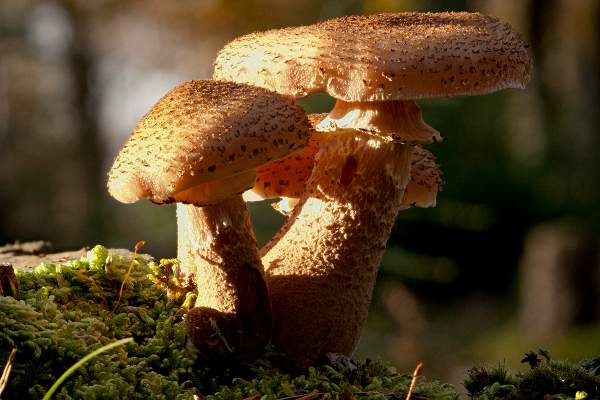 |
Yellow or brown with a reddish tint | These mushrooms with a dark leg, repeats the color of the hat | Edible |
False mushroom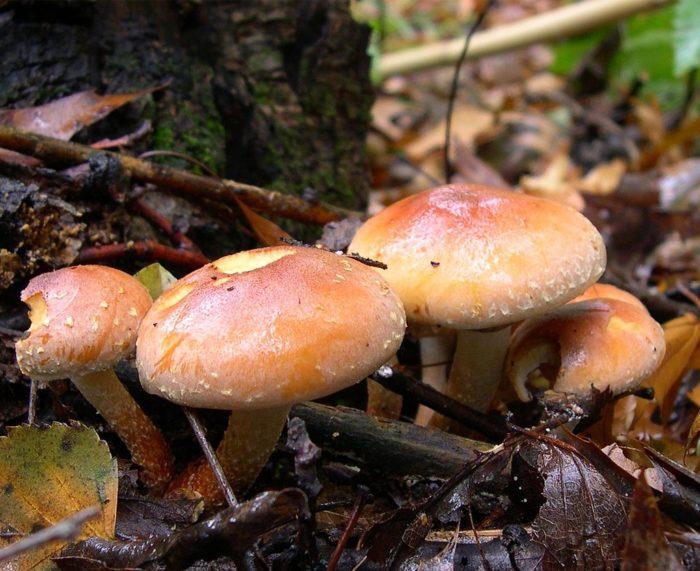 |
Bright, gray-yellow | The ring on the leg is missing | Inedible |
Swollen mushroom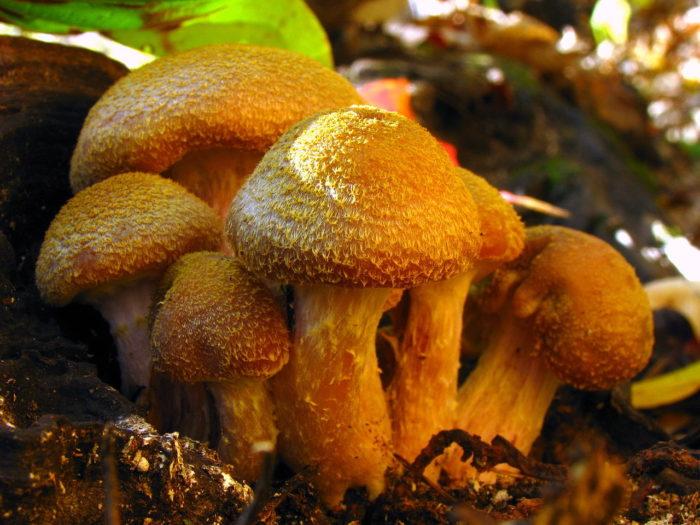 |
Brown with yellowish or ocher shades | In the lower part, the leg is swollen, brown, above it is light yellow | Edible |
Autumn honey agaric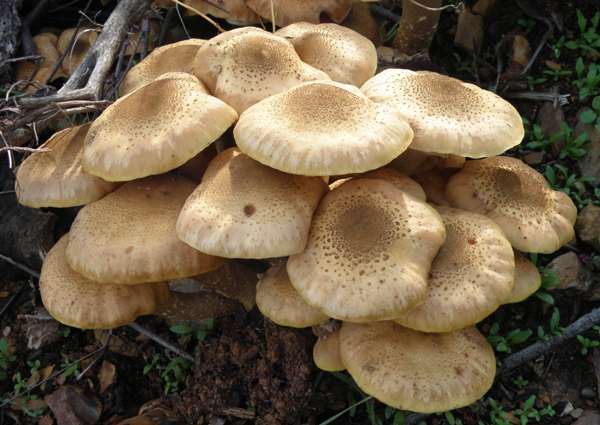 |
Colored in honey, brown and even greenish shades | Yellow-brown, darker underneath, covered with flakes | Edible |
As you can see from the table, these mushrooms have no poisonous counterparts, they are the darkest mushrooms. It is very easy to distinguish them, but attentiveness during collection will not hurt.
Drying mushroom
Shrinking honey fungus (Armillaria tabescens) is a relatively rare fungus of the Fizalakriev family. This variety was described in 1772. Fruit bodies of this species are used for food and medicinal purposes. Due to the high content of biologically active substances, their use has a positive effect on the functioning of the digestive system and other body systems.
It is believed that the mushroom is extremely beneficial for people who suffer from diseases of the biliary tract and liver. In addition, the active components present in this fruiting body help to stabilize blood pressure and eliminate atherosclerotic plaques. These mushrooms also help with a number of other diseases.
Description
Drying mushrooms grow in large groups. The size of the cap of one mushroom can vary from 3 to 10 cm. The surface of the cap is beige. In young fruiting bodies, it has a slightly convex shape, but in the future it is slightly straightened. The edges are folded. Dark scales appear on the surface of the matured caps. On the caps of this variety, mucus does not form, even in rainy weather.
The pulp of these honey agarics is white and has a strong mushroom smell. The taste is tart. In honey agarics of this species, the hymenophore is lamellar. It has a white or pinkish tint, plates adhered to the stem. Ripe fruits emit a cream-colored spore powder. The spores are elliptical and have a smooth surface.
The leg is high. Its length ranges from 7.5 to 20 cm. The diameter is from 0.5 to 1.5 cm. The structure of the stem is fibrous. To the bottom, it narrows greatly. In the upper part, the leg is white, and yellowish at the bottom. There is no ring in this species of honey agaric. An incision reveals that the stem is hollow.
Fruiting season and distribution sites
Shrinking honey agaric most often bears fruit in groups on the trunks and branches of trees.Fruit bodies often appear on rotten stumps. It is noted that this type of mushroom prefers oak wood, although they can bear fruit on other species. Less often, the mycelium bears fruit on the ground. Under favorable conditions, fruits begin to appear at the end of July. In the future, they can be found until the end of October. In regions with a mild climate, these fruiting bodies continue to bear fruit until the end of November.
Most often, this species is found in North American, Far Eastern and European forests. For the beginning of fruiting, special weather conditions are required. Most often, these mushrooms appear if, after a long period of heat, a cold snap sets in and rains begin. If autumn is dry, fruiting bodies are hardly formed.
Similar types and differences from them
Shrinking honey fungus outwardly resembles a number of species that bear fruit at about the same time. It is necessary to distinguish these mushrooms from twins, since many of the similar species are conditionally edible and poisonous.
This mushroom looks like an autumn mushroom. The latter have brownish caps and grow on stumps and trees with influenza, but these species can be easily distinguished. The autumn mushroom has a ring on the leg. In addition, this variety is much more common than the described specimens.
Shrinking honey fungus can be easily confused with representatives of the genus Stropharia mushrooms (bordered gallery). These species are outwardly almost indistinguishable. They bear fruit at the same time. They can be found mainly under trees and on stumps.
The only significant difference is the color of the spore powder. In the gallery bordered, it is brown. It is imperative to be able to distinguish between these fruiting bodies, because many representatives of the genus Stropharia are poisonous.
In addition, young shriveled mushrooms outwardly resemble talkers belonging to the Ryadovkov family. However, these fruits do not have the characteristic scales on the caps. In addition, they have black mycelial strands.
It is often difficult to distinguish this species of honey agaric from other representatives of the Fizalakriev genus. However, these fruits do not have the rings on the legs, which are present in most species of autumn honey agarics.
Edibility
This mushroom is edible. However, these fruiting bodies should be collected only in ecologically clean areas, because they tend to accumulate harmful substances. Fruits of this type are highly valued by mushroom pickers for their good taste.
Best of all, the taste of these mushrooms is revealed when frying or stewing. In addition, dried mushrooms are suitable for making soups. Fruits of this type can also be harvested for the winter. They are good for drying. These mushrooms are used for pickling and pickling.
conclusions
- Winter apple varieties are a great choice for those wishing to have fresh fruit all year round.
- Most winter species have excellent commercial qualities and are therefore profitable to grow for sale.
- The fruits tolerate long-term storage well. Depending on the variety, they can remain fresh until the New Year or until next summer.
- Many winter varieties are characterized by high yields. However, because of this, some trees can bear fruit once every two years. Therefore, it is necessary to regulate the number of ovaries.
- Apples can retain their softness and rich flavor, which only improves with long-term storage. Read about storing apples for the winter.

